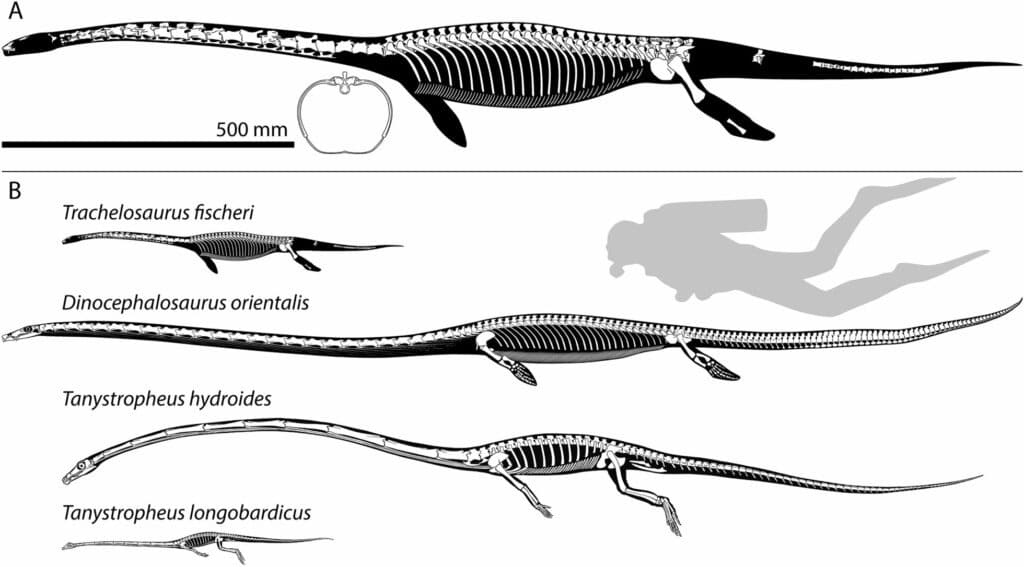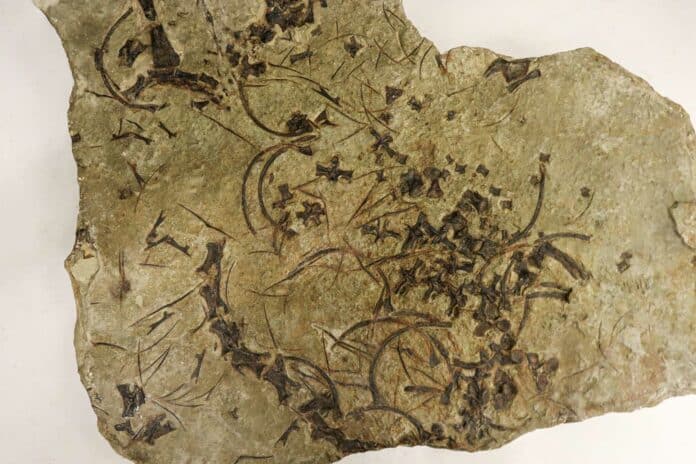An international team of paleontologists from the State Museum of Natural History Stuttgart, including Dr. Stephan Spiekman, Dr. Eudald Mujal, and Prof. Dr. Rainer Schoch, have reexamined the fossil of a reptile known as Trachelosaurus fischeri in greater detail. This fossil was first described in the early 20th century.
The researchers determined that Trachelosaurus fischeri is the world’s earliest known long-necked marine reptile by comparing it to recently obtained fossils of a related marine reptile from China. They have published their findings in the Swiss Journal of Palaeontology.
The first discovery of Trachelosaurus fischeri was made in the 19th century in the German town of Bernburg a der Saale, in a Middle Triassic rock stratum known as Buntsandstein. After that, it was added to Martin Luther University Halle-Wittenberg’s collection. The fossil is kept at the Stuttgart State Museum of Natural History, where experts have conducted a new examination on it.
Trachelosaurus fischeri was described in 1918, but its reptile classification remained controversial. This is due to its distinct morphology, which includes an abnormally high number of vertebrae, and the fossil’s poor preservation, which leaves the skeleton fragmented and unfinished within the rock in which it was discovered.
Dr. Stephan Spiekman, an expert on this group of animals at the State Museum of Natural History Stuttgart, said, “Through research on Chinese fossils of the long-necked marine reptile Dinocephalosaurus, which I published with colleagues just a few weeks ago, we were able to solve the mystery of Trachelosaurus fischeri. The anatomy shows us that it is closely related to Dinocephalosaurus.”
“Trachelosaurus fischeri is the first fossil of this reptile group to be found outside of China. It is also the oldest long-necked marine reptile known to date.”
At the beginning of the Triassic period, numerous new species of reptiles swiftly emerged on land and in the water following a significant extinction event approximately 252 million years ago. The first marine reptiles with long necks were among them. Research on how these intricate life transitions occurred is fundamental.

Because footprints from land animals have been preserved in the same rock as the fossil, researchers surmise that Trachelosaurus fischeri may have ended up in shallow water around 247 million years ago.
Researchers can now learn more about marine ecosystems at the start of the Triassic period because of this discovery and its reevaluation. According to the study’s authors, it also emphasizes how crucial historical museum and university collections are for researching natural history.
Journal Reference:
- Stephan N. F. Spiekman et al., A redescription of Trachelosaurus fischeri from the Buntsandstein (Middle Triassic) of Bernburg, Germany: the first European Dinocephalosaurus-like marine reptile and its systematic implications for long-necked early archosauromorphs, Swiss Journal of Palaeontology (2024). DOI: 10.1186/s13358-024-00309-6
